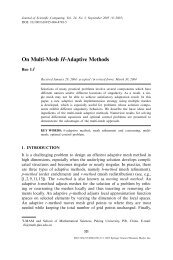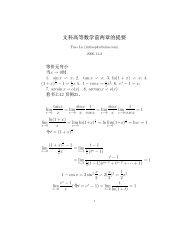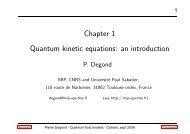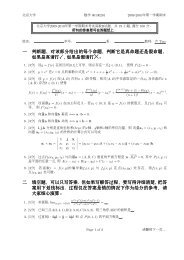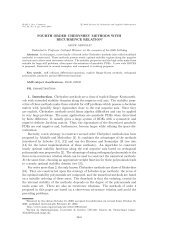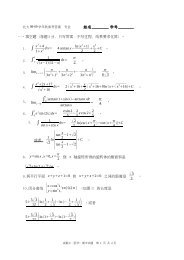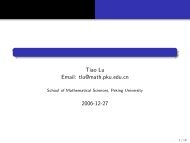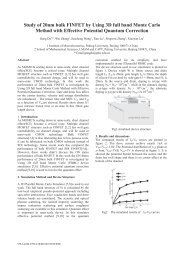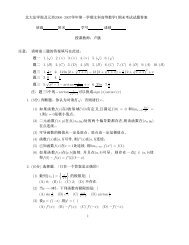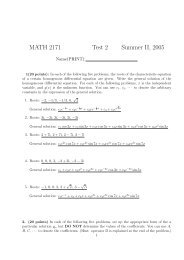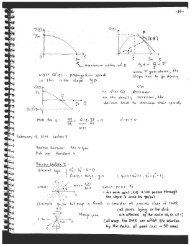Abstract
Abstract
Abstract
Create successful ePaper yourself
Turn your PDF publications into a flip-book with our unique Google optimized e-Paper software.
CHAPTER 3. BIFURCATION ANALYSIS 59<br />
Table 3.1: Computation of Parallel Efficiency<br />
#ofProcs. Linear Solve Time (s) Efficiency (Percent)<br />
2 9120.61 100 (Base case)<br />
4 4904.46 92.88<br />
8 3422.43 88.83<br />
12 1925.05 78.96<br />
16 1581.53 72.09<br />
24 1171.00 64.91<br />
32 966.06 59.01<br />
40 908.92 55.75<br />
48 771.91 53.34<br />
56 712.25 47.43<br />
64 667.62 42.69<br />
72 662.24 38.26<br />
80 641.39 35.55<br />
Amdahl’s Law [2] relates the percent of a code that is serial, the number of pro-<br />
cessors used, and the corresponding parallel efficieny for these processors. If ¯ N is the<br />
number of processors, Ē is the parallel efficiency, and ¯ S is the percent of the code<br />
that is serial, then Amdahl’s Law is<br />
Ē =<br />
1<br />
¯N ¯ S +(1− ¯ . (3.8)<br />
S)<br />
Therefore, Amdahl’s Law predicts an inverse relationship between the parallel effi-<br />
ciency of an application and the number of processors used when ¯ S = 0. Wecan<br />
use Amdahl’s Law and Table 3.1 to estimate the fraction of our application that is<br />
serial. This leads to a nonlinear least squares problem, where we fit our data with a<br />
theoretical curve that depends on one parameter ¯ S. To solve this problem, we used




